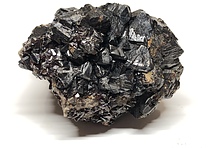Home PageAbout MindatThe Mindat ManualHistory of MindatCopyright StatusWho We AreContact UsAdvertise on Mindat
Donate to MindatCorporate SponsorshipSponsor a PageSponsored PagesMindat AdvertisersAdvertise on Mindat
Learning CenterWhat is a mineral?The most common minerals on earthInformation for EducatorsMindat ArticlesThe ElementsThe Rock H. Currier Digital LibraryGeologic Time
Minerals by PropertiesMinerals by ChemistryAdvanced Locality SearchRandom MineralRandom LocalitySearch by minIDLocalities Near MeSearch ArticlesSearch GlossaryMore Search Options
The Mindat ManualAdd a New PhotoRate PhotosLocality Edit ReportCoordinate Completion ReportAdd Glossary Item
Mining CompaniesStatisticsUsersMineral MuseumsClubs & OrganizationsMineral Shows & EventsThe Mindat DirectoryDevice SettingsThe Mineral Quiz
Photo SearchPhoto GalleriesSearch by ColorNew Photos TodayNew Photos YesterdayMembers' Photo GalleriesPast Photo of the Day GalleryPhotography
╳Discussions
💬 Home🔎 Search📅 LatestGroups
EducationOpen discussion area.Fakes & FraudsOpen discussion area.Field CollectingOpen discussion area.FossilsOpen discussion area.Gems and GemologyOpen discussion area.GeneralOpen discussion area.How to ContributeOpen discussion area.Identity HelpOpen discussion area.Improving Mindat.orgOpen discussion area.LocalitiesOpen discussion area.Lost and Stolen SpecimensOpen discussion area.MarketplaceOpen discussion area.MeteoritesOpen discussion area.Mindat ProductsOpen discussion area.Mineral ExchangesOpen discussion area.Mineral PhotographyOpen discussion area.Mineral ShowsOpen discussion area.Mineralogical ClassificationOpen discussion area.Mineralogy CourseOpen discussion area.MineralsOpen discussion area.Minerals and MuseumsOpen discussion area.PhotosOpen discussion area.Techniques for CollectorsOpen discussion area.The Rock H. Currier Digital LibraryOpen discussion area.UV MineralsOpen discussion area.Recent Images in Discussions
GeneralRE: Paragenesis of acanthite inclusions in luzonite
20th Apr 2017 19:44 UTCKyle Beucke 🌟
I apologize for re-posting this. I had a sample of copper sulfosalt (based on XRD, mostly luzonite and famatinite) that had assayed very high in silver slabbed and analyzed with a microprobe. Inclusions of acanthite were found.
Here is an electron image of one area of luzonite with two acanthite inclusions labeled:
The surrounding gray is probably luzonite and it has some silver (~1%).
These acanthite inclusions are irregular in shape and there does not appear to be any pattern to their occurrence. Any suggestions on how to interpret the paragenesis here? Am I correct in assuming the acanthite must be hypogene and not supergene? This assumption is based on: 1. No identified supergene minerals associated with the acanthite, and 2. The acanthite does not follow any obvious fracture in the copper sulfosalt, but rather is disseminated through it. Is it more likely that the acanthite was deposited at the same time as the copper sulfosalt, or did one likely precede the other?
Thanks,
Kyle

21st Apr 2017 00:19 UTCRichard Gunter Expert
It appears the Acanthite grains occur at the grain boundaries within the Luzonite. There is data to indicate that a sulphosalt such as Luzonite can only accommodate so much silver in its structure. That is why you have some silver in the surrounding Luzonite. Too much silver will not be able to be accommodated in the Luzonite and so will be swept into the grain boundaries. This type of texture is more easily seen in pegmatites but the low-temperature environment of Luzonite will eliminate other causes such as the partial melting of incompatible elements. Are there euhedral Luzonite crystals in the paragenesis?
21st Apr 2017 00:46 UTCKyle Beucke 🌟
This particular sample did not have visible, euhedral crystals. An XRD of similar looking material from the same hand sample indicated major luzonite and famatinite and minor enargite and tetrahedrite.
Thanks,
Kyle




Mindat.org is an outreach project of the Hudson Institute of Mineralogy, a 501(c)(3) not-for-profit organization.
Copyright © mindat.org and the Hudson Institute of Mineralogy 1993-2024, except where stated. Most political location boundaries are © OpenStreetMap contributors. Mindat.org relies on the contributions of thousands of members and supporters. Founded in 2000 by Jolyon Ralph.
Privacy Policy - Terms & Conditions - Contact Us / DMCA issues - Report a bug/vulnerability Current server date and time: May 12, 2024 17:35:51
Copyright © mindat.org and the Hudson Institute of Mineralogy 1993-2024, except where stated. Most political location boundaries are © OpenStreetMap contributors. Mindat.org relies on the contributions of thousands of members and supporters. Founded in 2000 by Jolyon Ralph.
Privacy Policy - Terms & Conditions - Contact Us / DMCA issues - Report a bug/vulnerability Current server date and time: May 12, 2024 17:35:51












